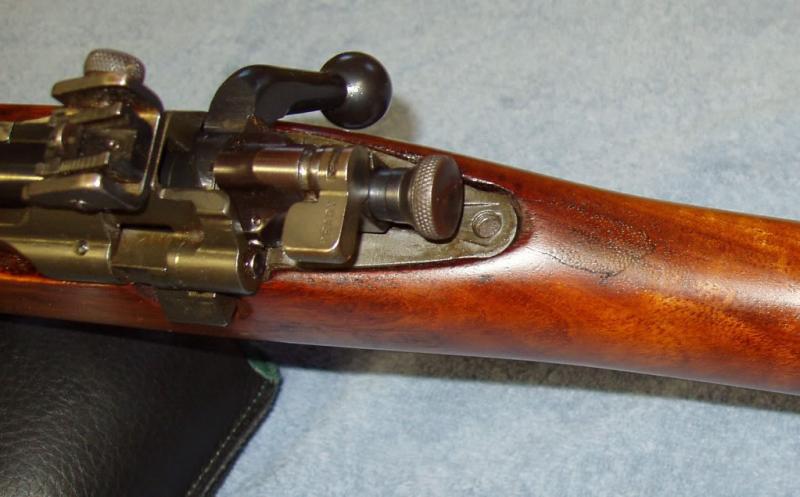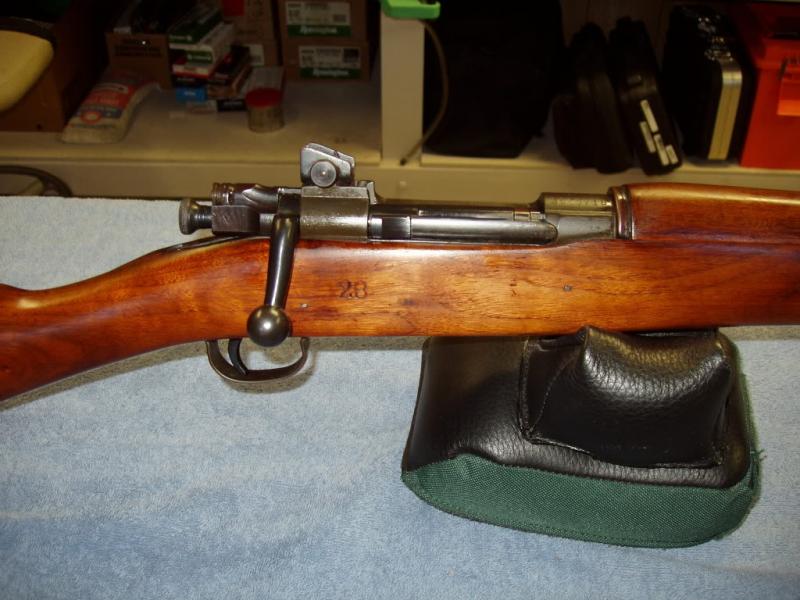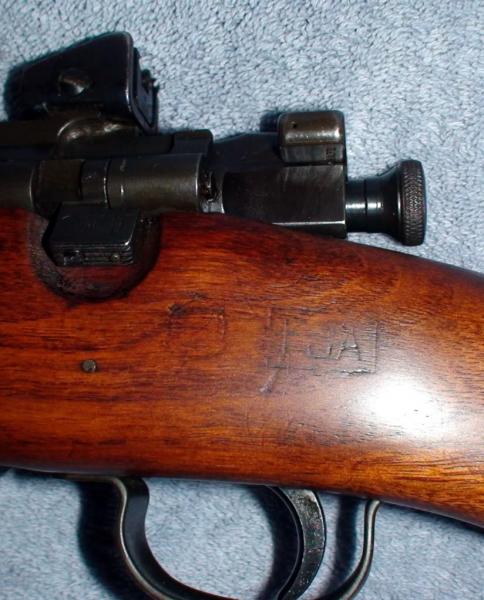-
FREE MEMBER
NO Posting or PM's Allowed

 Cracked Tang!!
Cracked Tang!!
-
02-21-2010 10:04 AM
# ADS
Friends and Sponsors

-
Legacy Member

With the rifle out of the stock, of course, you could spread the stock, cautiously, and see if you could widen that crack a bit. Perhaps you woukd need a second person to try to get some kind of adhesive into the crack, maybe plain Acraglass without filler, Gorilla glue, or whatever. Then relax the crack and clamp it. Of course I'm an amateur maybe Rick borecky will give you good info. I have a Greek return Rock Island finger groove stock with some of their inletted wood repair jobs and that is how they fixed them before these fancy glues were around.
will give you good info. I have a Greek return Rock Island finger groove stock with some of their inletted wood repair jobs and that is how they fixed them before these fancy glues were around.
Last edited by Griff Murphey; 02-21-2010 at 12:43 PM.
Reason: spelling
-
Thank You to Griff Murphey For This Useful Post:
-
FREE MEMBER
NO Posting or PM's Allowed

crack behind tang
In our shop I would remove the metal. Test if there is any way to flex the crack, perhaps pushing down on it or pushing the sides out. It's better if you can flex it, but I suspect pushing down is the only way you'll find that works. Next brush acetone on the crack area, trying to clean out the oil. Now put a 100 watt lamp right over the area, until it is hot; might take about 30 minutes. When it's hot, leave the lamp and mix a two part epoxy, like acraglass. Leave the fiberglass flock out of the mix. When epoxy is ready you can brush the crack again with the acetone, then put some epoxy onto the crack area. We usually see the epoxy wick right down into the crack and so we apply more. If the crack can be flexed do that while adding the epoxy. If the cracks won't flex at all you can add a drop or two of acetone to the epoxy before putting epoxy in the crack - acetone is an epoxy thinner and will help it get further down into the crack.
clamp the wood down, or wrap rubber bands around the section to clamp it. when using clamps I put a piece of plastic on top of the glued wood and clamp over that to avoid gluing clamp to the gun.
After epoxy dries (next day) you will need to clean out the epoxy that ouzed into the tang space. If you prefer you can coat the tang and screw with epoxy release and put them back in during the gluing. I would probably just glue the cracks and not let too much epoxy run down into the tang cavity. Sometimes I would make a fake tang for a piece of wood, then coat with release agent or wrap with plastic and clamp that into the cavity.
You will have to use coloring agent and re-inlet the tang if it wasn't in the gun during the repair. Whether you left the tang in or clean out the cavity you should use inletting blue to check the tang placement after the job is done. You want to check that the tang does not touch the rear of the cavity to prevent the stock from being cracked again.
-
Since this stock was originally fitted with reinforcing "pins" (transverse stub screws) instead of cross bolts you may want to inspect the area where the recoil lug bears on the stock for damage.
I believe Chuck commented on a stock with very similar damage just last week. Im not sure if it was in here or in a different forum.
As far as the Poly glues are concerned they are very strong but their main advantage is that they are highly water resistant. If that's not a factor you may want to use something more forgiving. Gorilla glue is pretty thick and might be a good choice if the stock was broken but forcing it in a narrow crack won't be easy. It also tends to foam up and out of the joint while it sets. If you get any on your fingers plan on wearing it for two or three weeks. 
Regards,
Jim
PS: does anybody ever use the repair screws like ordnance used to use? I thought Billricca.com was a source.
-
Thank You to JGaynor For This Useful Post:
-
-
Thank You to Chuckindenver For This Useful Post:
-
FREE MEMBER
NO Posting or PM's Allowed

As Chuck in Denver states, you need to repair both the recoil lug area as well as the tang. I salvaged a split stock (worse than yours) by using acraglass on the recoil lug plus the tang. In the tang area, I removed some wood and then drilled a .375" dia. hole into the wood at about a 45 degree angle about 1" deep. I filled it with acraglss mixed with wood shavings. I then glassbedded the action to the stock. It is still sound today many 1000s of rounds later.
Pinned 1903 stocks are well known for splitting.
-
FREE MEMBER
NO Posting or PM's Allowed


I really appreciate all the responses. I guess I should have added that the cracked wood in the tang area is actually a solid piece. The cracked piece does raise up from the tang and I can push it back down. It is not loose, but very tight. Recoil will knock it up from the tang.
As to the repair, I am not familiar with this kind of work and would probably need someone to do it for me.
-
Advisory Panel


your welcome to contact me outside the forum for my rates if you like.
-


















 Register To Reply
Register To Reply











